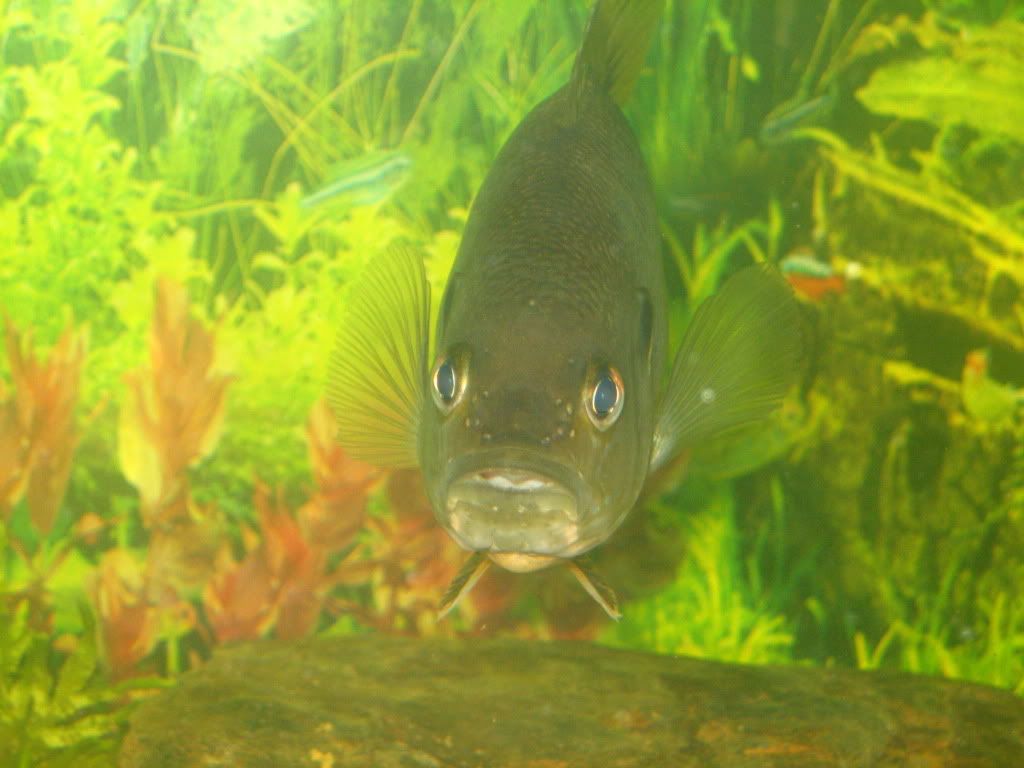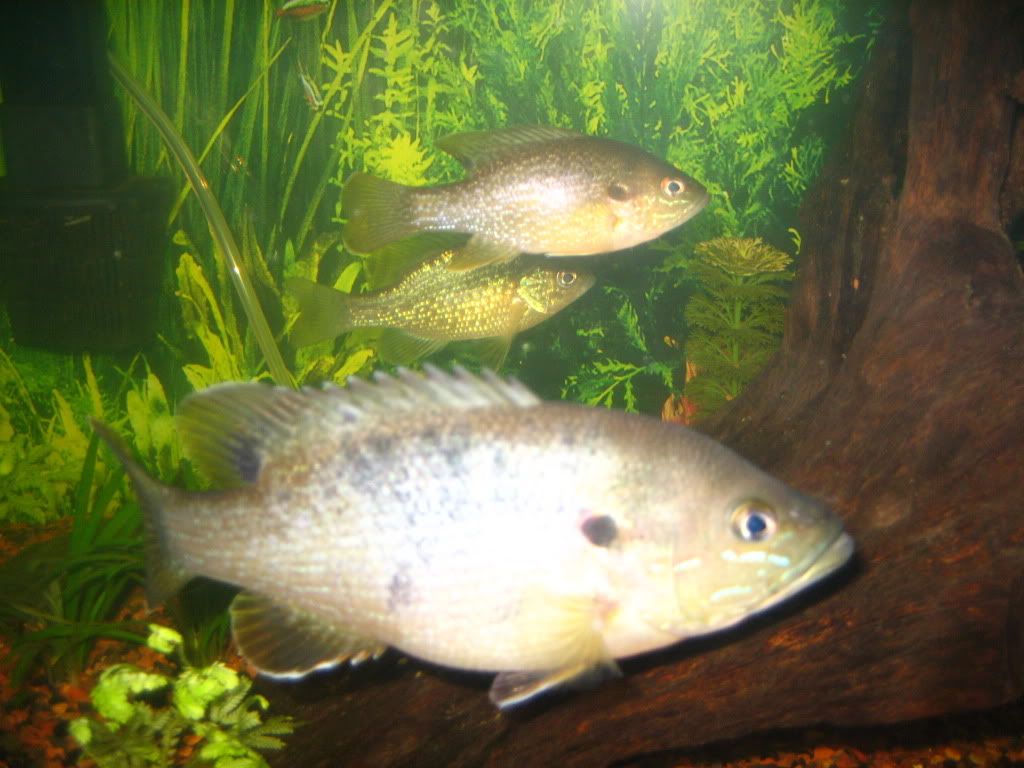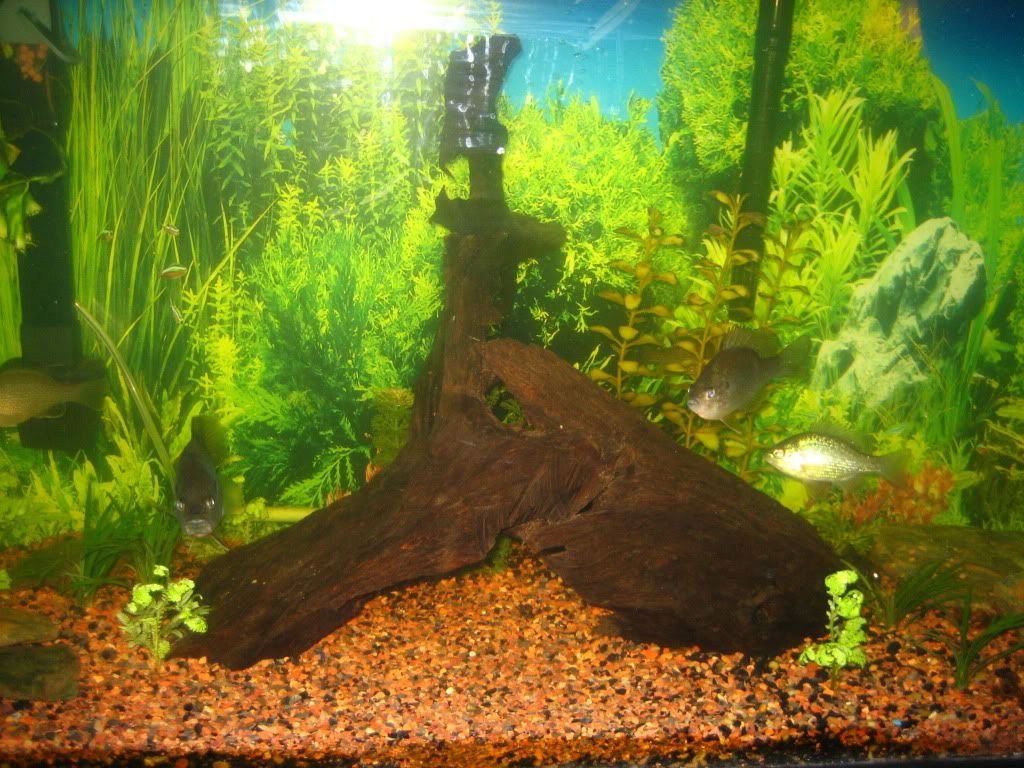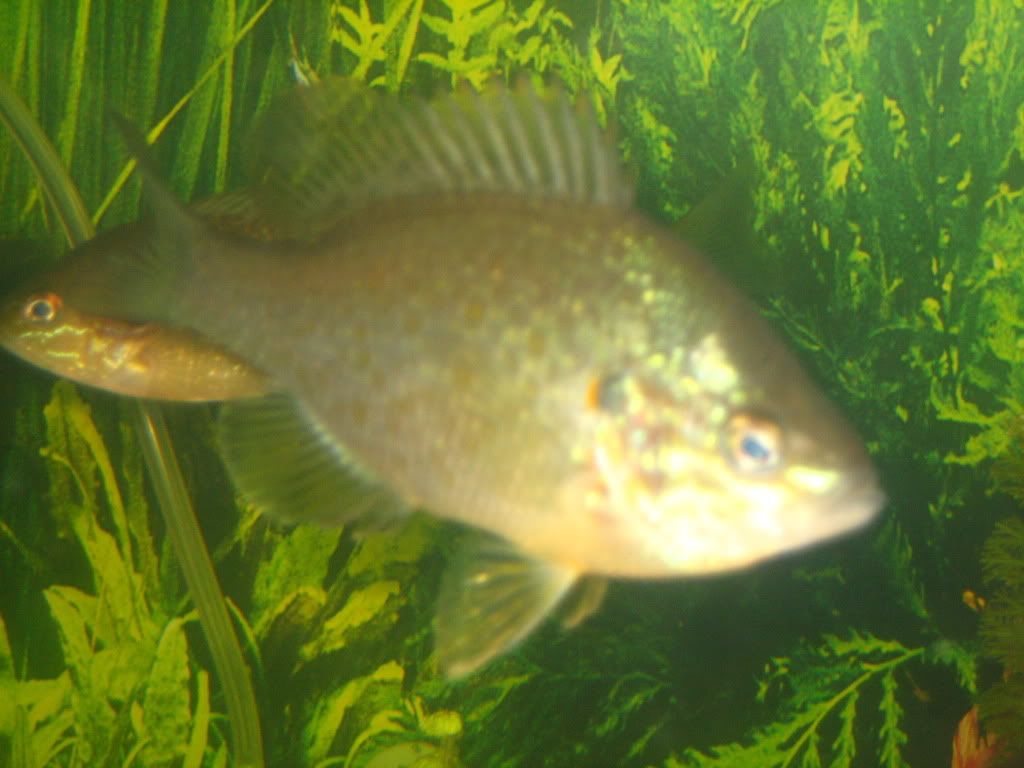I would say anything under 11" or so would be alright for he 55g. Post a picture o you sunfish we'll help you I.D it.Hey everyone. New to the site and was directed over here by one of the cichlid forums I belong to. I currently have a 55 gallon African tank and I am moving soon. Africans don't really do it for me as I want a more natural look. I have been looking through the gallery here and would LOVE to start a planted native tank in my 55. I do have a sunfish in my 20L that is only about 2 inches that I snagged this past weekend and is doing fine. I cannot tell which kind it is. But I was wondering if you guys can lead me into the right direction as to where to start with a native tank. As far as I know a few places I fish at are stocked with catfish, sunnys, minnows, bass. What can I fit into my 55 gallon comfortably? If it helps to know what area I am located in, it is Philadelphia. Thanks for your help!\
Mike
Hello
Started by
Guest_sonix215_*
, Aug 20 2009 04:19 PM
31 replies to this topic
#21
 Guest_donkeyman876_*
Guest_donkeyman876_*
Posted 28 August 2009 - 07:22 AM
#22
 Guest_sonix215_*
Guest_sonix215_*
Posted 31 January 2010 - 12:44 PM
Havent posted any pics of my tank the way it looks now. defintely a big change from when i first joined. I'm really looking to add some moss to attatch to the drift wood and rocks but I cant find any anywhere! but here some updated pics! maybe you guys can give me some I.d's on these too.
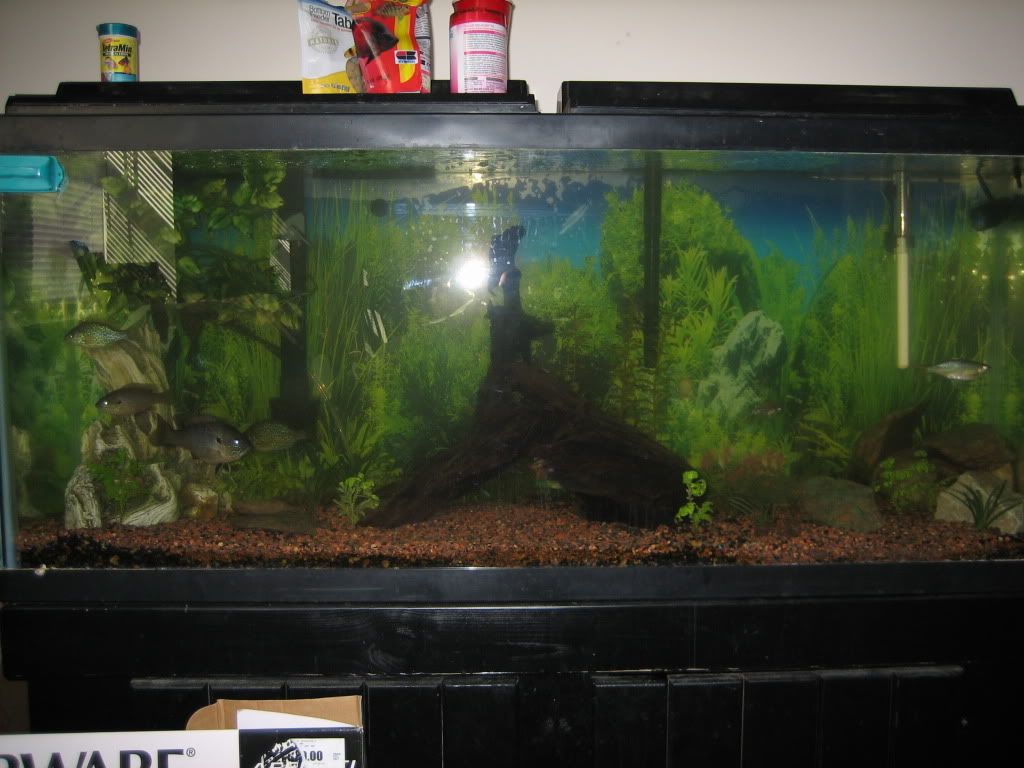
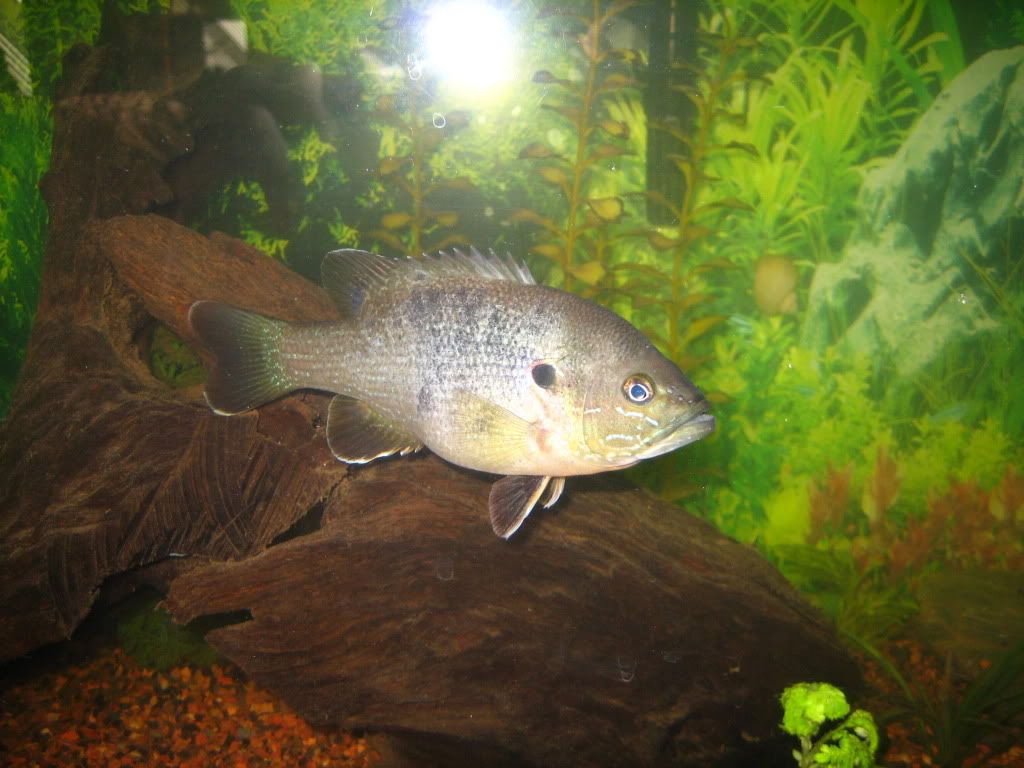
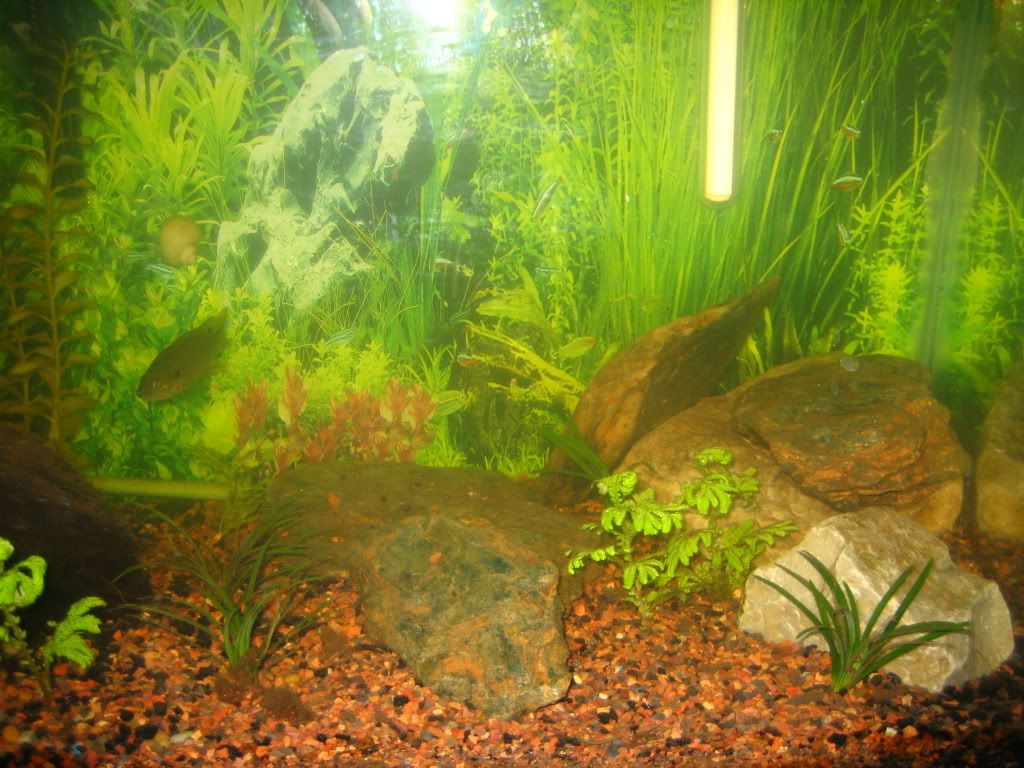
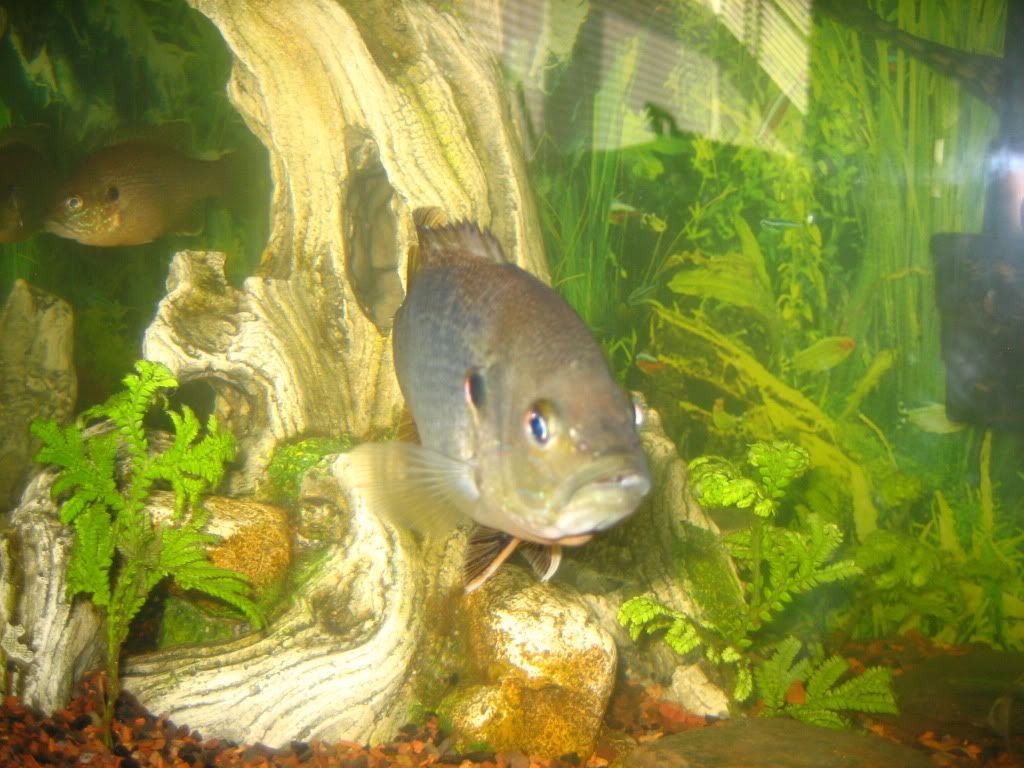
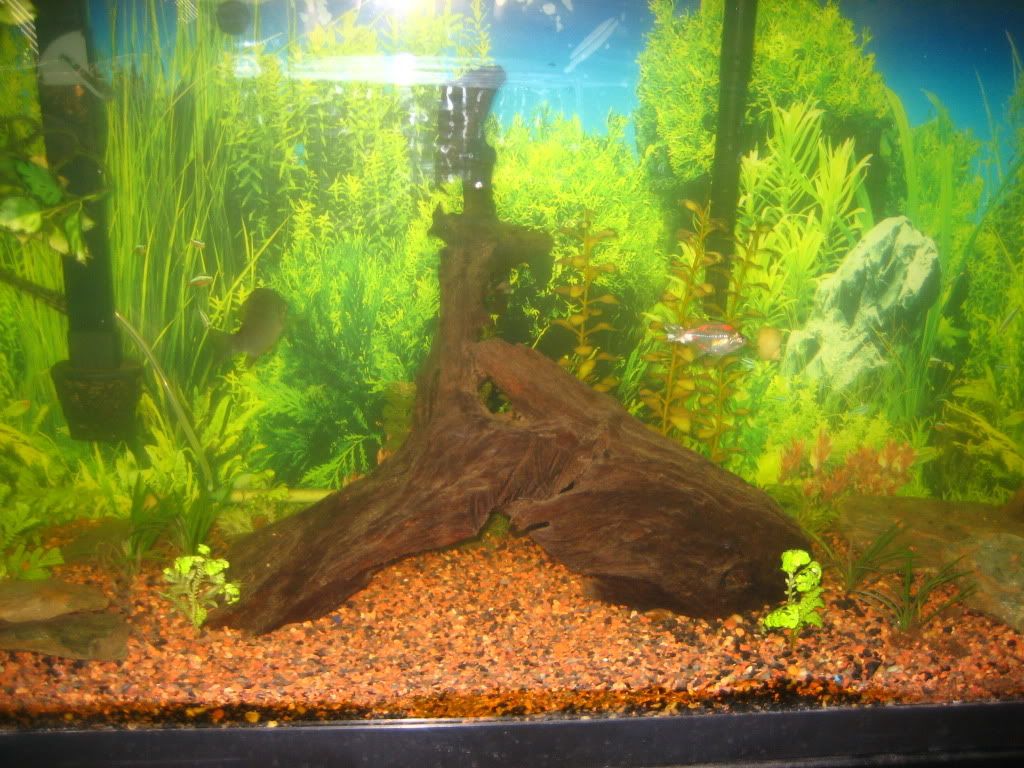
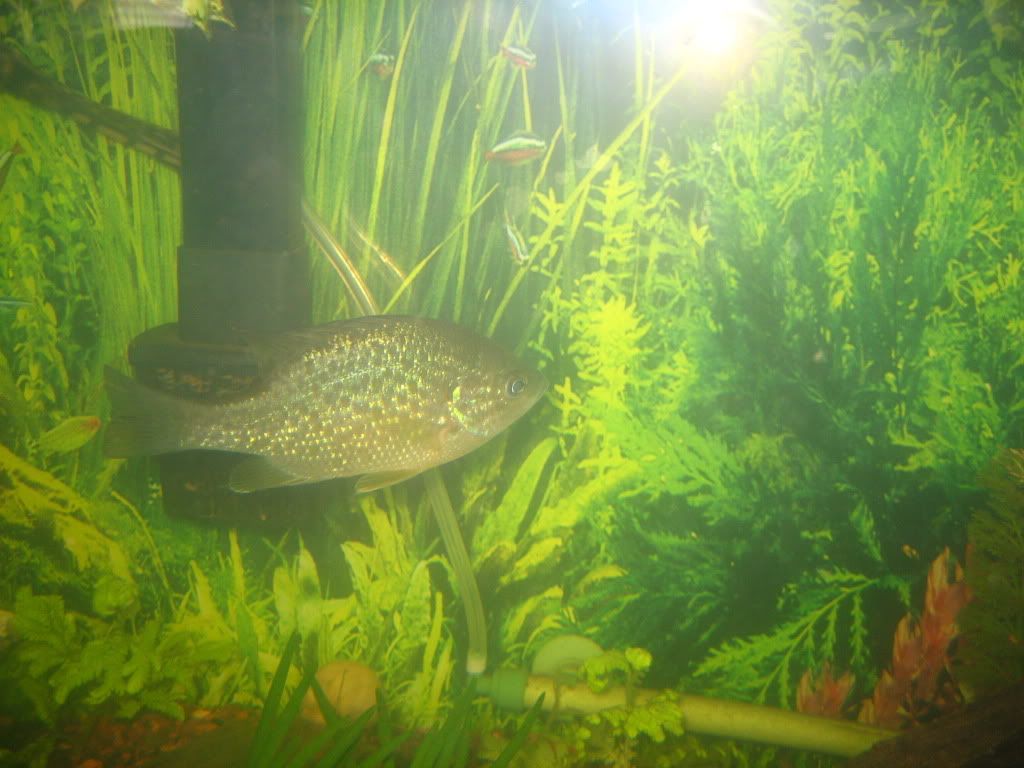






#24
 Guest_sonix215_*
Guest_sonix215_*
Posted 31 January 2010 - 01:25 PM
are bluegills found in ponds? thats where i got all these guys from. i was thinkin they were all pumpkinseeds. theres a yellow bullhead in there too somewhere lolLooks like a bluegill in the first picture.. Maybe a pumpkinseed in the background of the third?
#28
 Guest_Newt_*
Guest_Newt_*
Posted 01 February 2010 - 10:25 PM
Nice looking tank! I hope you're not too attached to those tetras...if the sunfish don't get them, the bullhead will. The bullhead may eventually outgrow the 55, but the sunfish should be able to stay in it for life.
Sunfish in your area include: green, bluegill, redbreast, pumpkinseed, and redear. Here's a short key to adults of these species that I culled down from the sunfish key in Fishes of Tennessee:
1.a. Pectoral fin short and rounded, if pressed against fish's face doesn't reach past eye; blue markings on face prominent; may have white or yellow edges on median fins...2
1.b. Pectoral fins long to very long and pointed, if pressed against fish's face reach past eye; blue markings on face present or absent; no white or yellow edges on median fins...3
2.a. Body long, lean, bass-like; mouth large, bass-like; dark spot in base of dorsal and anal fin; opercular tab short or non-existent; pale or red margin at edge of dark ear-spot...Green Sunfish
2.b. Body deeper, typical sunfish-shaped; mouth smaller; no dark spots in fins; opercular tab long and dark to edge...Redbreast Sunfish
3.a. Dark spot at base of dorsal fin; no blue markings on face; opercular tab long and dark to edge...Bluegill
3.b. No dark spot at base of dorsal fin; may have blue markings on face; opercular tab short or non-existent; red spot at edge of dark ear-spot...4
4.a. Pectoral fin very long, reaching nearly to dorsal fin base if pressed upwards; face pointed; body relatively narrow, usually depth about 40% of length...Redear Sunfish
4.b. Pectoral fin not as long, falling short of dorsal fin base by 3-5 scale rows if pressed upwards; face rounded; body relatively deep, usually depth 50% or more of length...Pumpkinseed
Pumpkinseeds are usually more colorful than redears, but not always. The opercular tab is the "ear" extending back from the gill cover (operculum). Juvenile sunfish are harder to ID.
You may also catch rock bass and crappie, which have 5-7 anal fin spines (3 in sunfish), and the little sunfish of the genus Enneacanthus (bluespotted, banded, and blackbanded), which have rounded caudal fins (somewhat forked in Lepomis sunfish) and are less than 3" long. I believe the Enneacanthus species are all protected in PA.
Sunfish in your area include: green, bluegill, redbreast, pumpkinseed, and redear. Here's a short key to adults of these species that I culled down from the sunfish key in Fishes of Tennessee:
1.a. Pectoral fin short and rounded, if pressed against fish's face doesn't reach past eye; blue markings on face prominent; may have white or yellow edges on median fins...2
1.b. Pectoral fins long to very long and pointed, if pressed against fish's face reach past eye; blue markings on face present or absent; no white or yellow edges on median fins...3
2.a. Body long, lean, bass-like; mouth large, bass-like; dark spot in base of dorsal and anal fin; opercular tab short or non-existent; pale or red margin at edge of dark ear-spot...Green Sunfish
2.b. Body deeper, typical sunfish-shaped; mouth smaller; no dark spots in fins; opercular tab long and dark to edge...Redbreast Sunfish
3.a. Dark spot at base of dorsal fin; no blue markings on face; opercular tab long and dark to edge...Bluegill
3.b. No dark spot at base of dorsal fin; may have blue markings on face; opercular tab short or non-existent; red spot at edge of dark ear-spot...4
4.a. Pectoral fin very long, reaching nearly to dorsal fin base if pressed upwards; face pointed; body relatively narrow, usually depth about 40% of length...Redear Sunfish
4.b. Pectoral fin not as long, falling short of dorsal fin base by 3-5 scale rows if pressed upwards; face rounded; body relatively deep, usually depth 50% or more of length...Pumpkinseed
Pumpkinseeds are usually more colorful than redears, but not always. The opercular tab is the "ear" extending back from the gill cover (operculum). Juvenile sunfish are harder to ID.
You may also catch rock bass and crappie, which have 5-7 anal fin spines (3 in sunfish), and the little sunfish of the genus Enneacanthus (bluespotted, banded, and blackbanded), which have rounded caudal fins (somewhat forked in Lepomis sunfish) and are less than 3" long. I believe the Enneacanthus species are all protected in PA.
#31
 Guest_sonix215_*
Guest_sonix215_*
Posted 02 February 2010 - 05:17 PM
I would but I don't have another tank to put them in and I'm not allowed to have another either( the girlfriend said so). but I already had 2 white clouds and 2 zebra danios eaten by the large sunfish in the pictures above lol. No biggy though.
I guess I should look more closely. Still, your little tropicals are likely to be eaten, and the cories may do some damage on the way down. I strongly suggest you separate the natives from the tropicals ASAP.
Reply to this topic
2 user(s) are reading this topic
0 members, 2 guests, 0 anonymous users


